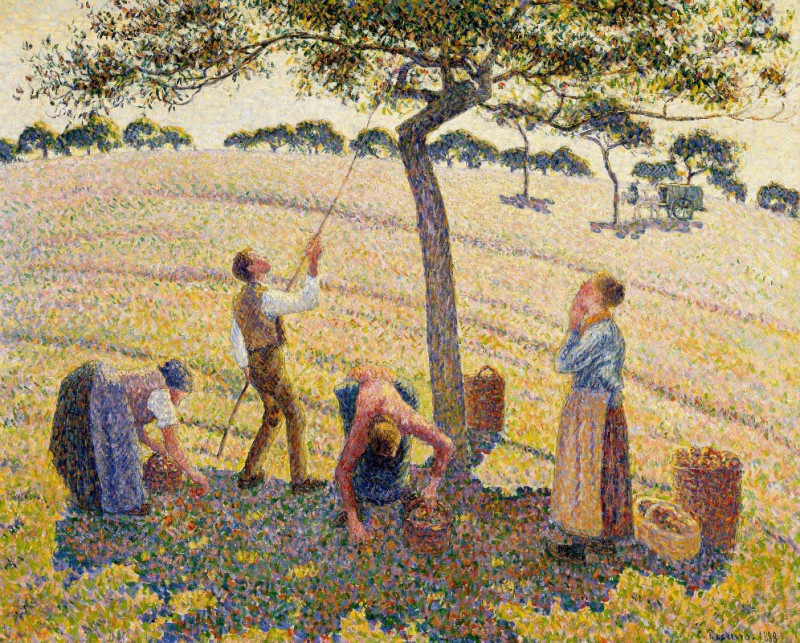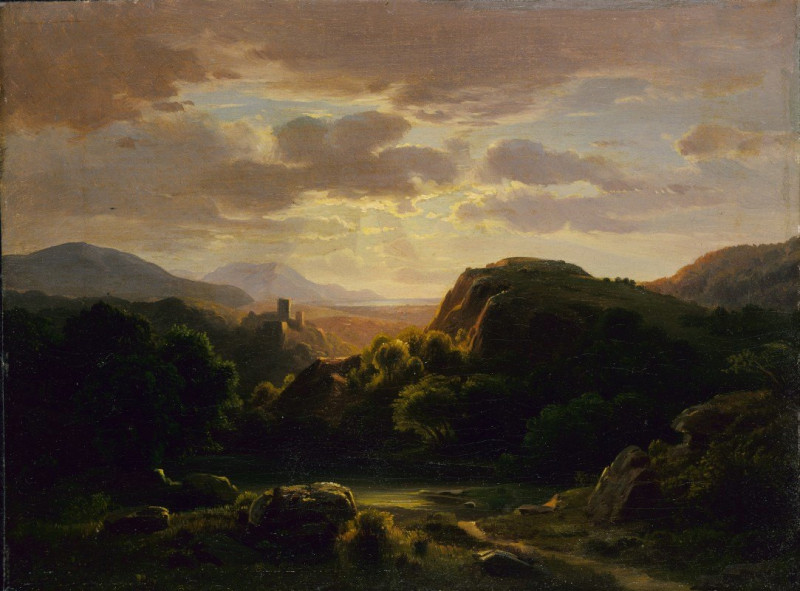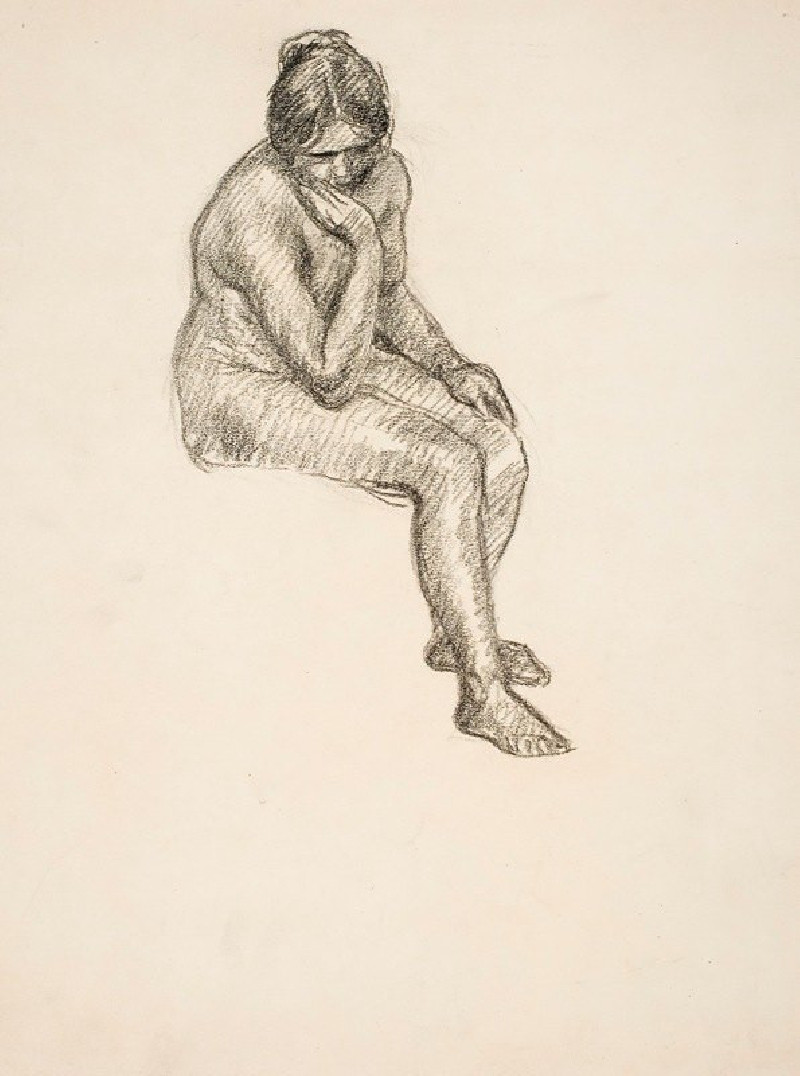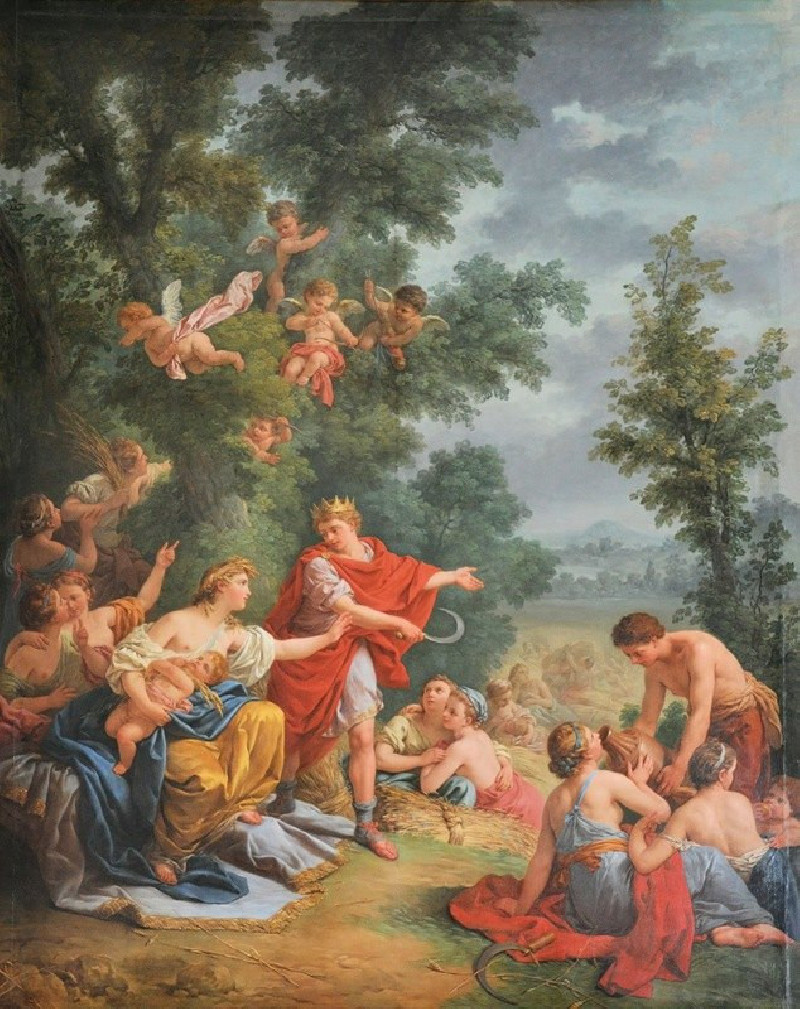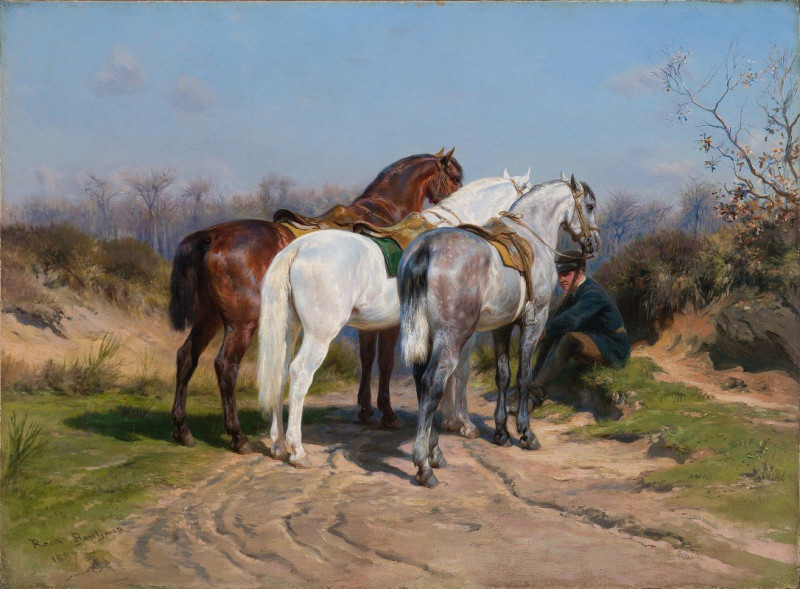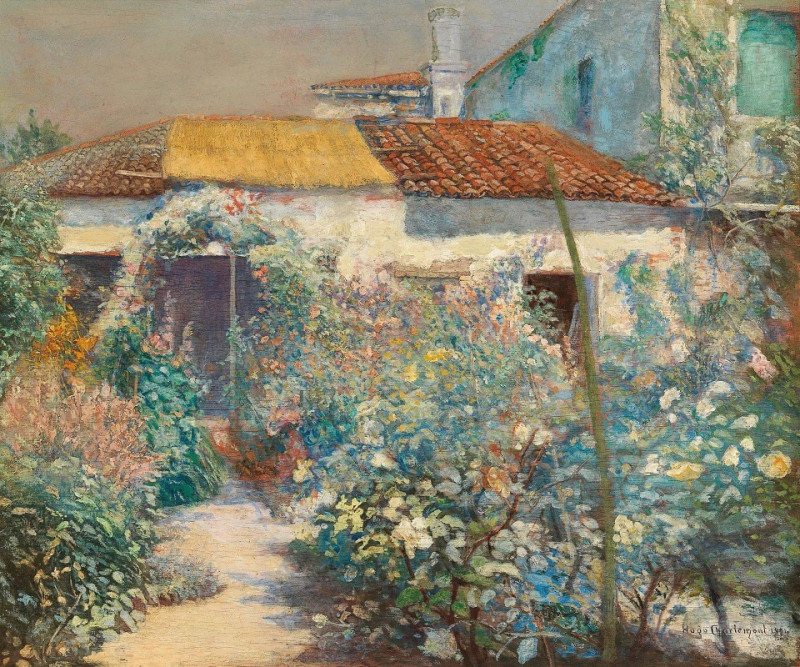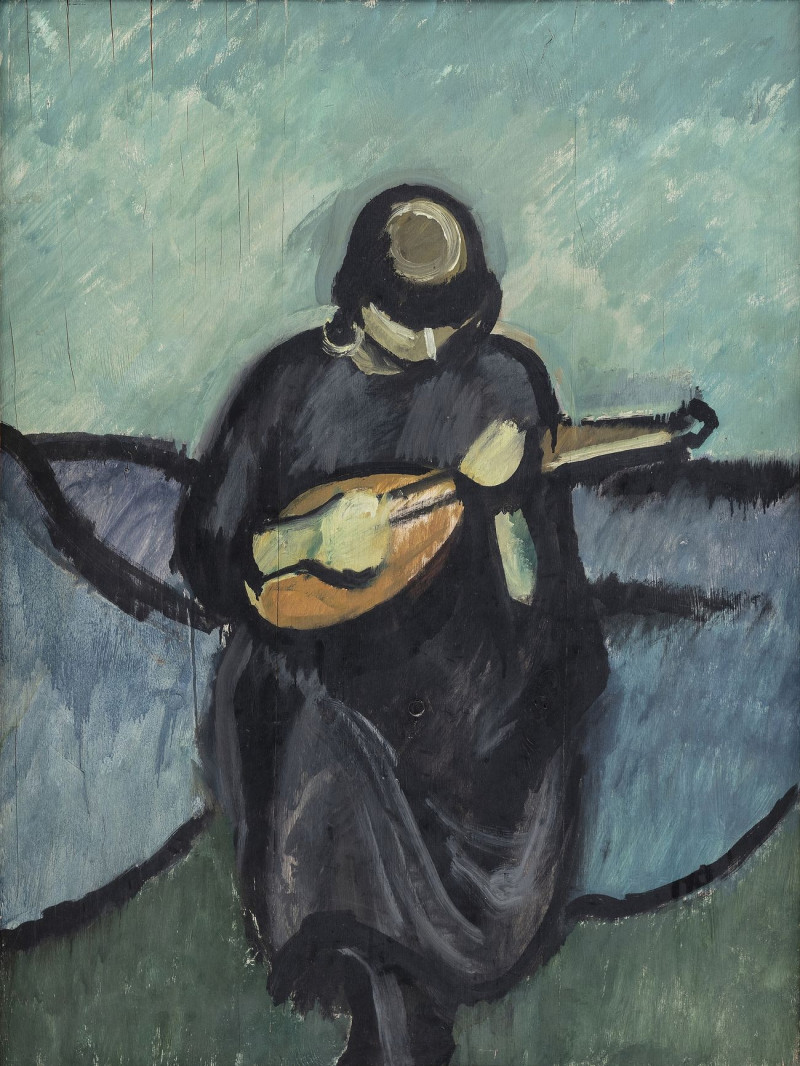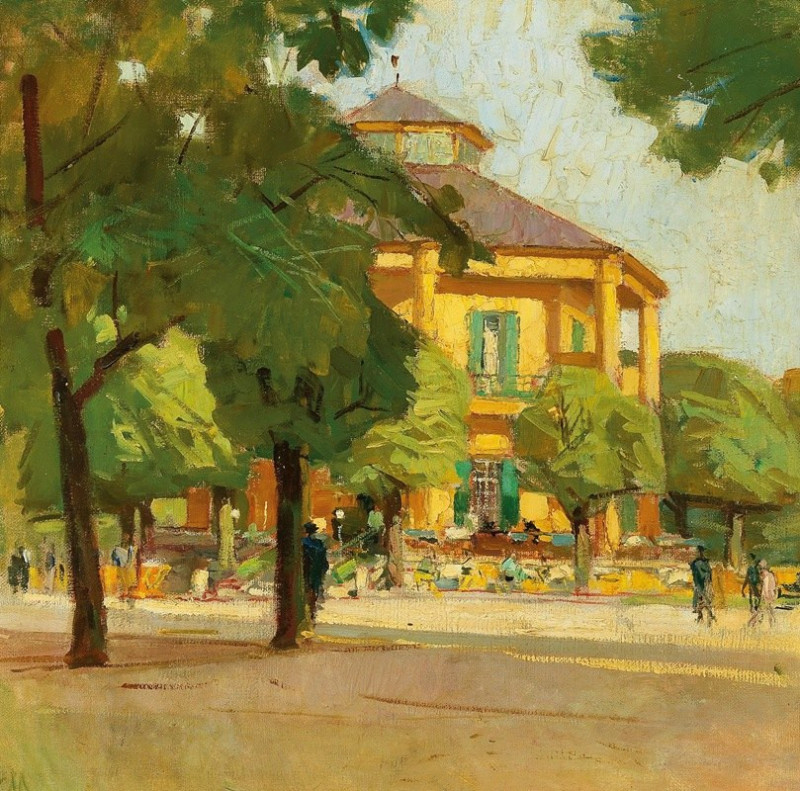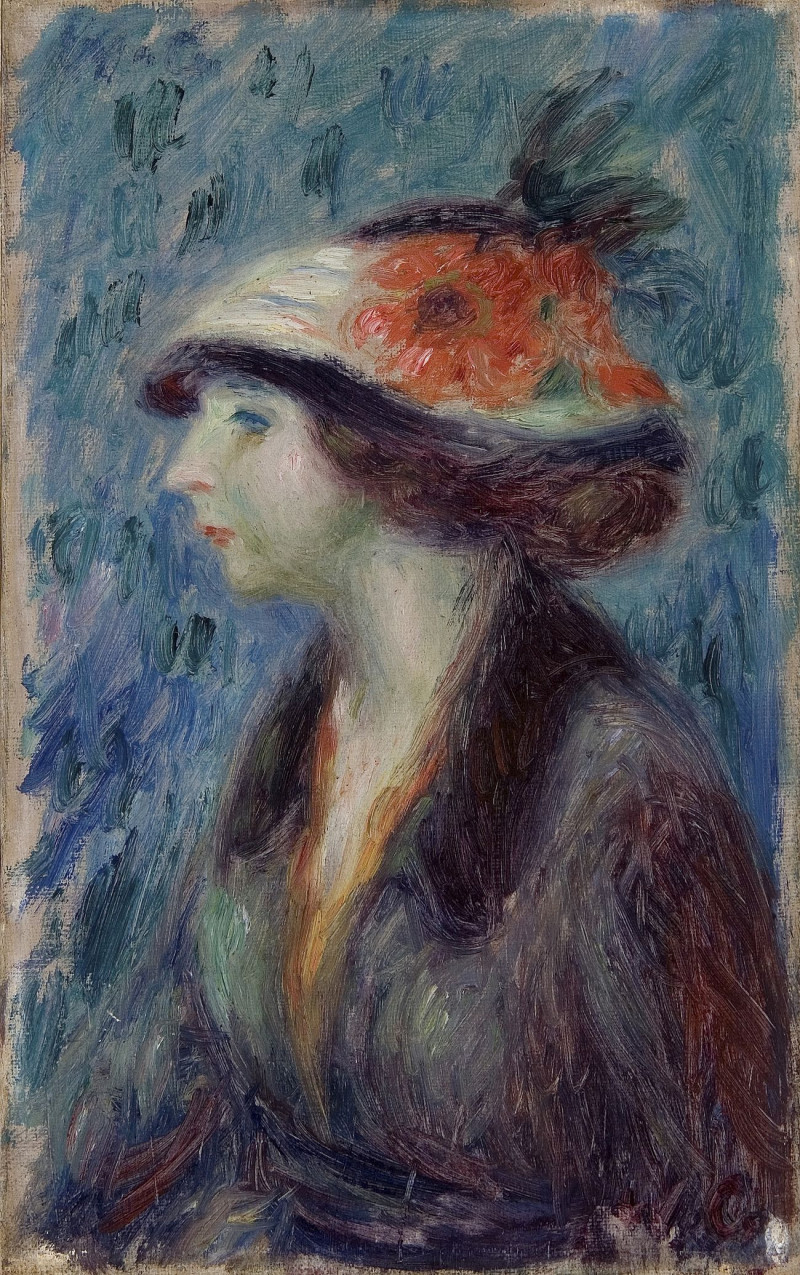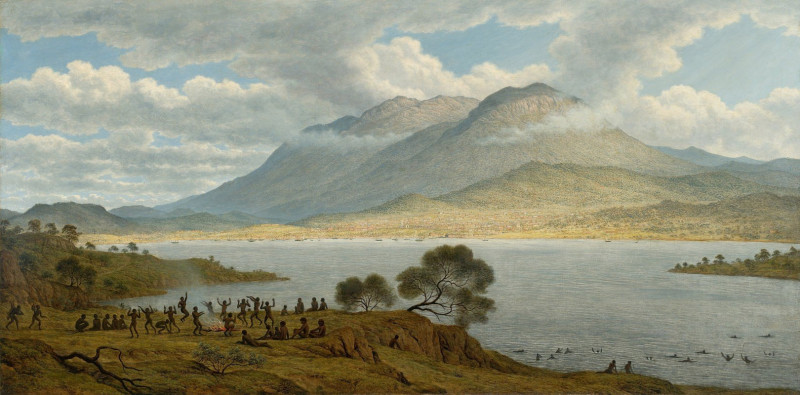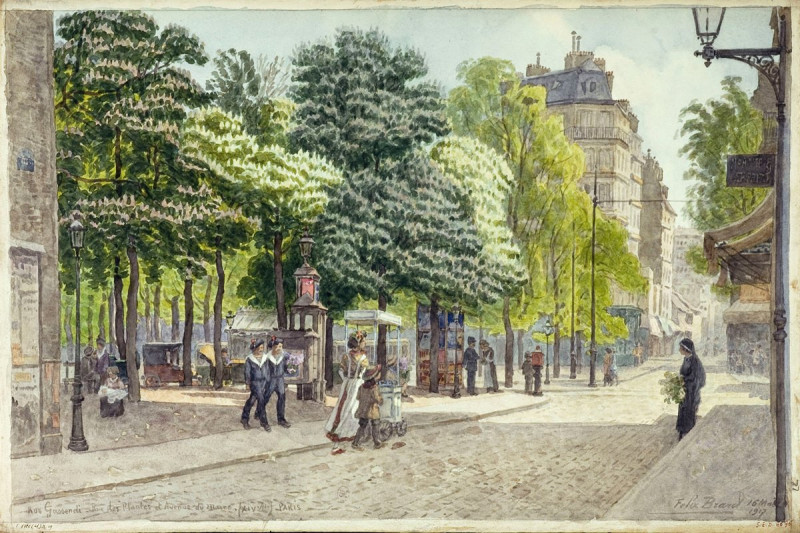Apple Harvest (1888)
Technique: Giclée quality print
Recommended by our customers
More about this artwork
"Apple Harvest" (1888) by Camille Pissarro is a vivid and picturesque representation of rural life, capturing the serene yet labor-intensive essence of the harvest season. This charming painting portrays a group of workers engaged in the act of apple picking, a timeless autumnal task. The scene is set in a lush orchard under the gentle shade of an expansive tree, with sunlight filtering through the leaves creating a dappled effect on the ground.In the foreground, diverse activities are underway: one worker stretches upwards, reaching for apples high in the tree with a long stick, while others kneel, gathering the fallen apples into baskets. Each figure is absorbed in their task, illustrating the diligence and cooperation essential in agricultural life. The background extends the idyllic rural setting, showing more trees and a hint of a cart in the far distance, possibly for transporting the harvested apples.Pissarro's technique is characterized by the use of short, distinct brush strokes that blend together to form a vibrant tapestry of color and light. This approach not only enhances the textural quality of the painting but also reflects the fleeting changes of light and shadow, enveloping the scene in an atmosphere of lively, yet peaceful, activity.Overall, "Apple Harvest" is not just a depiction of agricultural labor; it is a celebration of the harmony between humans and nature, and a testament to the rural spirit captured through the Impressionist eye of Pissarro.
Delivery
Returns
Blessed are they who see beautiful things in humble places where other people see nothing. — Camille Pissarro
Camille Pissarro (1830-1903) was born on St.Thomas (now the US Virgin Islands) to a Portuguese father and a Dominican mother. He went to Paris to study art at Ecole des Beaux-Arts. He was an early pioneer of pointillism and neo-impressionism and later became a mentor of many famous impressionist painters including Cezanne, Manet, Renoir, and Gauguin. His paintings depicted rural and urban French landscapes and lifestyle. Many of his works politically captured images of peasants and laborers. Today, he is considered the father of impressionism.

